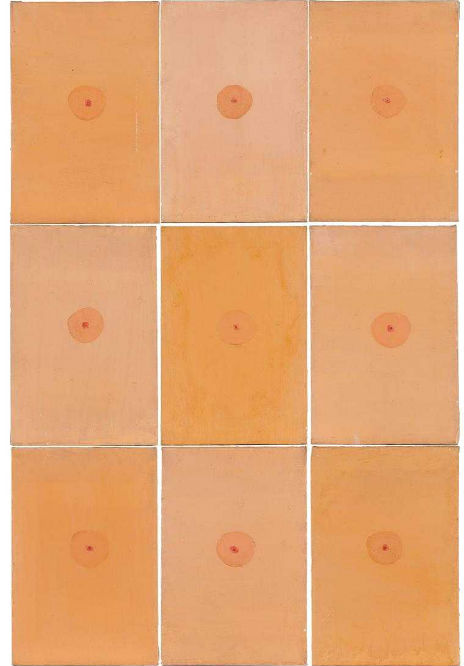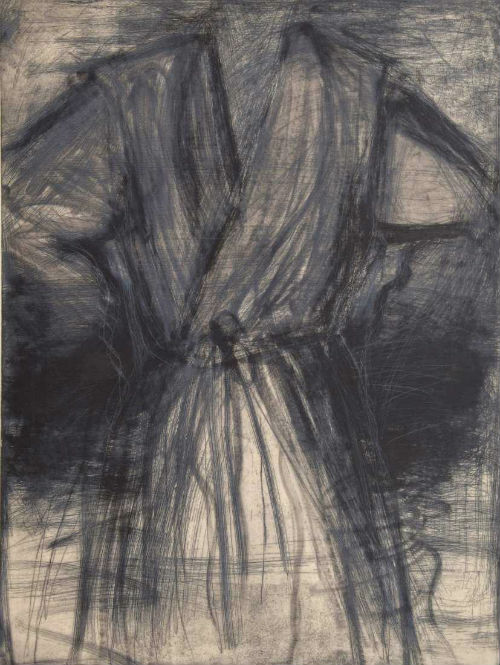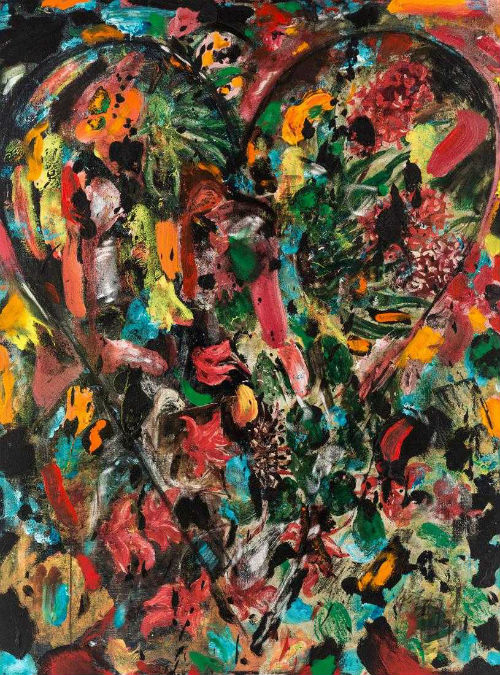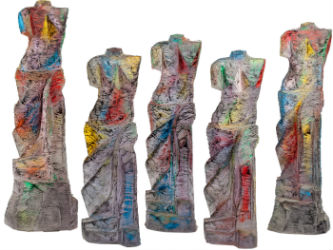
NEW YORK – Equally famous for his contributions to the often-overlapping worlds of pop art and performance art, artist Jim Dine (b. 1935-) and other artists began staging “art happenings” in the late 1950s before he turned to painting in the 1960s. It was around this time when he became inextricably linked with the rise of pop art in the early 1960s as he incorporated commercial and everyday objects into his works, which represented several mediums.
“Jim Dine is one of those rare artists who oscillates between painting, sculpture, photography and printmaking seamlessly – each practice informing and interacting with the next,” said Ryan Hardesty, curator of exhibitions and collections at the Jordan Schnitzer Museum of Art, Washington State University. In 2014, Dine gifted more than 200 of his prints to the museum. “Early in his career, Dine undertook what must have felt like a necessary but very un-avant-garde project: drawing from the figure, honing the skills of a serious draftsman. To this day, drawing is at the root of all he does.”
Interestingly, while Dine’s early work exists in the pop art spectrum, he never saw himself as a pop artist. His works explored the meaning and influence of the objects he depicted and their symbolism, rather than celebrating them. Today, his works – many of which explore themes of the body and memory – are avidly collected and his legacy in art history is well secured.

“Frequently he affixed everyday objects, such as tools, rope, shoes, articles of clothing, and even a bathroom sink, to his canvases. Characteristically, these objects were Dine’s personal possessions,” according to commentary on the website of the Guggenheim Museum in New York City, which in 1999 presented a major exhibition of Dine’s works.
Dine is known for revisiting certain themes in his work, almost as if psychoanalyzing them, and among his favorite motifs were hearts, which were alleged to represent his wife; and bathrobes, which were a stand-in for the artist himself. While most artists sketch their own faces for a self-portrait, Dine’s self-portraits were characterized by the absence of his physical form, replaced by an image of his favorite bathrobe.

Characterized by their bold colors and strong graphic style, Dine’s works hold universal themes and are both highly personal – almost autobiographical – yet also an invitation for viewers to their own meanings. By focusing on basic objects and motifs and repeating them, Dine takes conceptual art to the next level, declaring that these objects are worthy of art and the viewer’s consideration.
“His hallmark motifs and the themes – robes, hearts, Venus, tools, Pinocchio and figurative works – contain autobiographical significance, but also offer a jumping-off point for maximum pictorial expressiveness,” said Hardesty. “This may be the visionary artist’s greatest legacy. Dine’s expansive imagination sees expressive potential in all material and subjects he sets out to work with.”

“The collecting appeal in Jim Dine’s work is in the repeated familiar themes. He is as synonymous with hearts and bathrobes as … a yellow M is with hamburgers,” said Wade Terwilliger, president of Palm Beach Modern Auctions in West Palm Beach, Florida. “On their own, his subjects are common, utilitarian, but over the years he worked and reworked his hearts, bathrobes, Venus [de Milo] figures and Pinocchios so many times that he has become linked with the icons. You know when you are looking at a Dine.”
There’s a repetition, a formula, that works no matter the subject, Terwilliger says, as Dine removes an ordinary object from its familiar context, enlarges it to monumental size and paints it in a vibrant color palette. “The success is in making the viewer reconsider their relationship with that object,” he said.

Some artists are best known for a certain style or period and these are the works that collectors will gravitate to while a few artists, like Dine, have managed to attract attention throughout his career and across his body of work, from paintings to drawings to sculpture.
“Canvases that command the most at auction are the monumental, brilliantly colored robes and hearts,” Terwilliger said. “What I find interesting is that no one chronological period stands out among the highest; over 45 years of his career are represented in the top ten. The early 1960s objects (“Shoe” and “Flesh Tie,” for example), which are isolated in an otherwise neutral ground, are represented among the record highs as well. Overall, I’d say that is a result of consistency over an incredibly long span of time.
# # #


